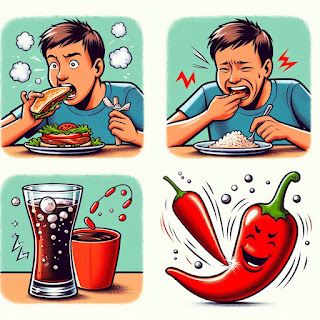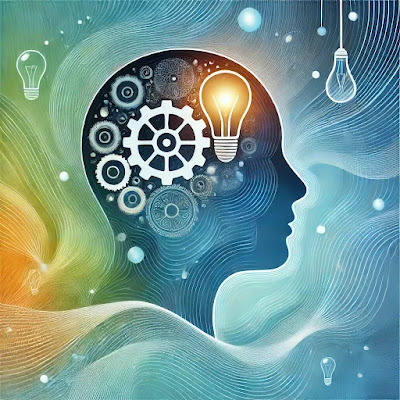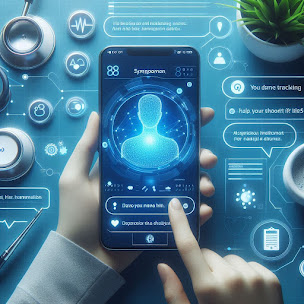Have you ever had a "gut feeling" about something? Or felt butterflies in your stomach when you’re nervous? Turns out, there’s a scientific reason behind these sensations—your gut and brain are deeply connected. In fact, your gut is often called your "second brain," and it plays a huge role in your mental well-being.
In this blog post, we’ll explore the fascinating gut-brain connection, why it matters, and how you can take simple steps to improve both your gut health and mental health. Let’s dive in!
What Is the Gut-Brain Connection?
.jpeg) |
| Gut-Brain Connection |
The gut-brain connection refers to the constant communication between your gut and your brain. This two-way street is powered by:
1. The Vagus Nerve: A long nerve that sends signals between your gut and brain.
2. Neurotransmitters: Chemicals like serotonin (the "feel-good" hormone) are mostly produced in the gut.
3. The Microbiome: Trillions of bacteria in your gut influence everything from digestion to mood.
This connection means that what happens in your gut doesn’t stay in your gut—it directly impacts your brain, emotions, and mental health.
Why Does the Gut-Brain Axis Matter?
Research shows that an unhealthy gut can contribute to:
- Anxiety and depression
- Brain fog and poor focus
- Low energy and fatigue
- Sleep problems
On the flip side, a healthy gut can:
- Boost your mood
- Improve mental clarity
- Increase energy levels
- Support better sleep
The gut-brain axis is a powerful reminder that taking care of your gut is just as important as taking care of your mind.
Signs Your Gut-Brain Connection Might Be Off
How do you know if your gut health is affecting your mental well-being? Look out for these signs:
- Frequent digestive issues (bloating, gas, constipation)
- Mood swings or irritability
- Trouble concentrating
- Feeling tired all the time
- Poor sleep quality
If you’re experiencing any of these, it might be time to focus on your gut health.
How to Improve Your Gut-Brain Connection
The good news? You can take simple, actionable steps to strengthen your gut-brain axis and feel better both physically and mentally. Here’s how:
1. Eat a Gut-Friendly Diet
Your gut bacteria thrive on the right foods. Try adding these to your diet:
- Probiotics: Found in yogurt, kefir, sauerkraut, kimchi, and kombucha.
- Prebiotics: Found in bananas, garlic, onions, asparagus, and oats.
- Fiber-Rich Foods: Whole grains, fruits, and vegetables keep your gut happy.
- Healthy Fats: Omega-3s from salmon, walnuts, and flaxseeds reduce inflammation.
2. Manage Stress
Chronic stress can harm your gut bacteria. Try these stress-busting techniques:
- Practice mindfulness or meditation.
- Take deep breaths (try the 4-7-8 breathing technique).
- Spend time in nature or do activities you enjoy.
3. Prioritize Sleep
Poor sleep disrupts your gut microbiome. Aim for 7-9 hours of quality sleep by:
- Sticking to a consistent sleep schedule.
- Avoiding screens before bed.
- Creating a calming bedtime routine.
4. Stay Hydrated
Water is essential for digestion and nutrient absorption. Aim for 8-10 glasses a day, and consider adding electrolytes for an extra boost.
5. Move Your Body
Exercise improves gut health by increasing blood flow and reducing inflammation. Even a 20-minute walk can make a difference!
6. Consider Supplements
If you’re struggling with gut issues, supplements like probiotics, prebiotics, or digestive enzymes can help. Always consult a healthcare professional before starting any new supplement.
Real-Life Impact: Stories of the Gut-Brain Connection
Many people have transformed their mental health by focusing on their gut. For example:
- Sarah, a 32-year-old teacher, struggled with anxiety and bloating. After switching to a gut-friendly diet and taking probiotics, she noticed a significant improvement in her mood and digestion.
- John, a 45-year-old entrepreneur, battled brain fog and low energy. By prioritizing sleep, hydration, and stress management, he regained his focus and vitality.
These stories show that small changes can lead to big results.
Conclusion: Your Gut Holds the Key to Mental Wellness
The gut-brain connection is a powerful reminder that your body and mind are deeply intertwined. By taking care of your gut, you’re also taking care of your mental health. Start with small steps—eat nourishing foods, manage stress, and prioritize sleep. Over time, you’ll notice a positive shift in how you feel, both physically and emotionally.


.jpeg)

































